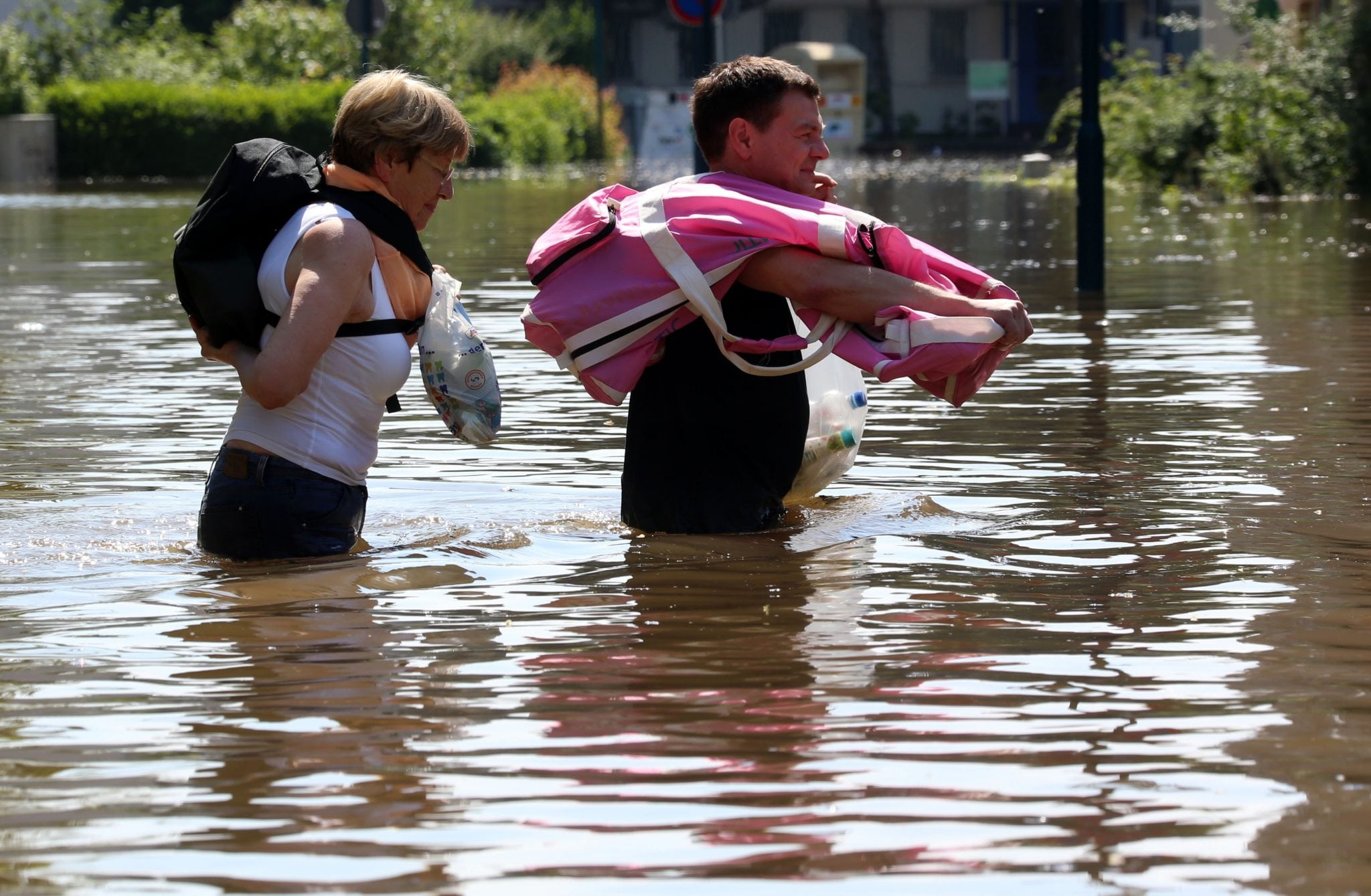Skift Take
Flood waters will have disappeared by the time summer visitors arrive, but flood damage along the Danube basin will effect rail and road travel, as well as knock out some of the Europe's most charming small towns.
More than 80,000 emergency personnel including firefighters and soldiers were on duty Saturday, working aggressively to contain the most dramatic floods in Germany in a decade. Thousands of residents were still unable to return to their homes, and bridges and streets were impassable in many regions of eastern and southern Germany.
Twenty people reportedly have already died in the floods across central Europe after several days of heavy rains. Thousands have been put up in emergency shelters waiting for the waters to recede so they can get back to their homes.
German news agency dpa said people in Magdeburg in Saxony-Anhalt were anxiously waiting downstream as the crest of the Elbe river approached Saturday. Authorities evacuated a nursing home and turned off electricity in several parts of the city. Where the Saale river meets the Elbe, about 3,000 people had to leave their homes.
“The coming days will be extreme and difficult,” Magdeburg’s mayor, Lutz Truemper, told news agency dpa.
High water levels were also reported in Hungary, Slovakia and the Czech Republic, while thousands of people in Austria were busy shoveling away mud left by the receding floodwaters of the Danube.
In Hungary, around 2,000 residents of the town of Gyorujfalu northwest of the capital of Budapest were evacuated because authorities were afraid the levees wouldn’t withstand the pressure of the Danube’s waters. Another 980 residents had to leave their homes along the river out of precaution.
Hundreds of volunteers and military personnel were helping shore up the defenses along the Danube in Szentendre, a town 14 miles (22 kilometers) north of Budapest, while military reservists from other Hungarian counties filled sandbags and packed them on top of walls along the river, which was expected to peak here on Sunday at about 16 inches (40 centimeters) above its current record of 25 feet (7.60 meters).
A 330 yards (meters) long and about 2.5 yards (meters) tall mobile flood wall was assembled in eight hours alongside the river promenade in the town earlier this week and is protecting its picturesque center.
“After the floods of 2002 and 2006, the promenade wall became very weak and we decided to tear it down,” said Ferenc Dietz, Szentendre’s mayor. “We decided to put up a mobile flood wall, in part because it provides total security.”
The rising waters of the Danube, Europe’s biggest river, were expected to reach Budapest on Monday. The water levels were already at 28.2 feet (8.60 meters) on Saturday and expected to rise to 29.4 feet (8.95 meters) at the peak of the flood — inching close up to the top of the river’s flood fences, which are 30.5 feet (9.30 meters) tall. In one of the most devastating floods, in 1838, the Danube killed 150 people and left over 50,000 others homeless.
In Slovakia, the Danube was still on the rise in the towns of Sturovo and Komarno near the Hungarian border. The situation in Komarno was especially critical as several protective barriers started leaking and volunteers had arrived to reinforce them with sandbags.
In the Czech Republic, the waters were dropping further and cleanup work was under way. However, anti-flood measures were to remain in place as heavy rains and thunderstorms were forecast for the weekend.
Pablo Gorondi contributed reporting from Budapest, Hungary, and Karel Janicek from Prague, Czech Republic.
Copyright (2013) Associated Press. All rights reserved. This material may not be published, broadcast, rewritten, or redistributed.![]()
The Daily Newsletter
Our daily coverage of the global travel industry. Written by editors and analysts from across Skift’s brands.
Have a confidential tip for Skift? Get in touch
Tags: budapest, danube, germany, river cruise, tourism, vienna
Photo credit: Floods in central Europe continue to create havoc. Jens Buettner / AP Photo/dpa
